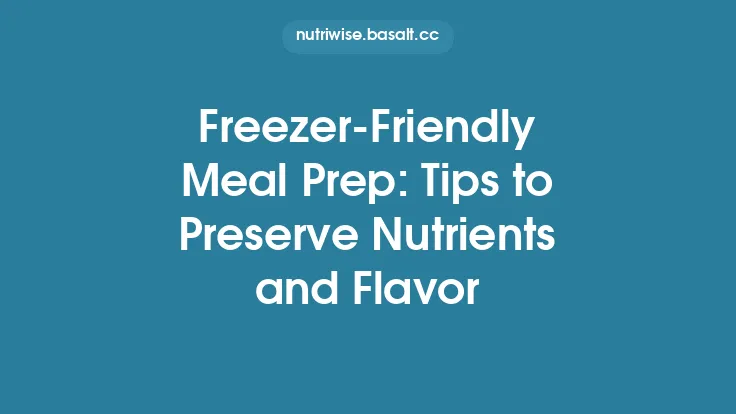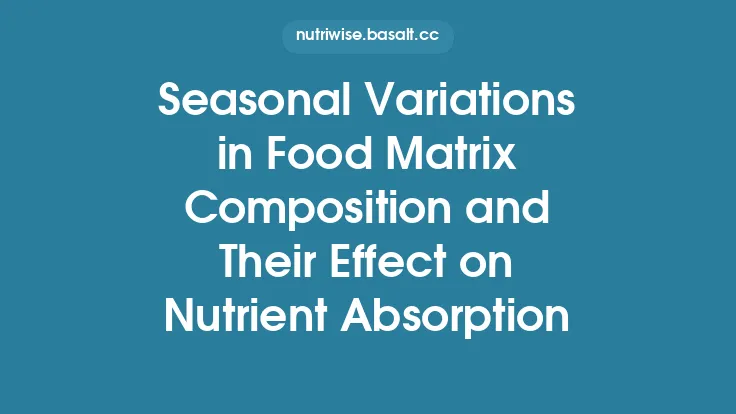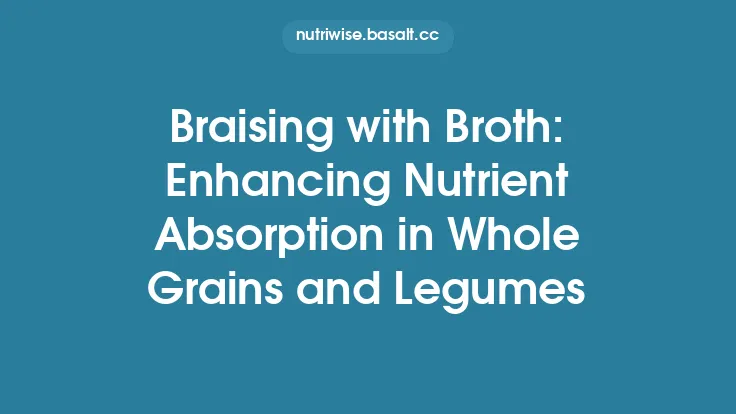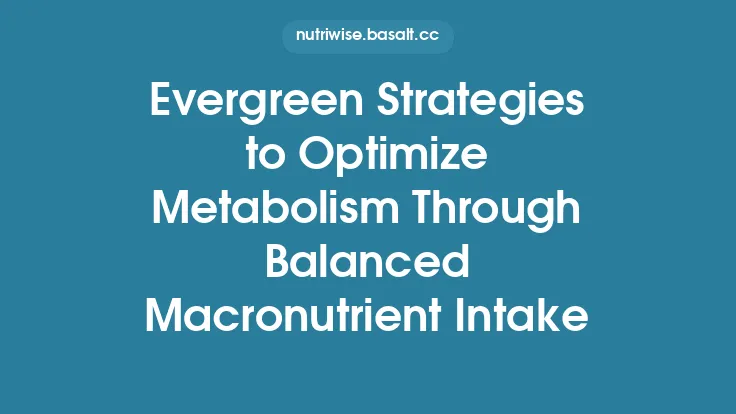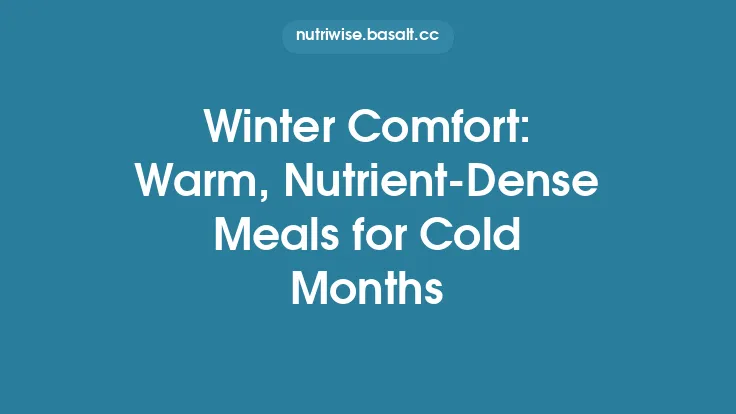When a meal‑prep routine is working well, the real test comes at the moment you pull a container from the fridge or freezer and try to bring it back to life. The goal isn’t just “hot enough to eat”—it’s to revive the dish so that its original texture, mouthfeel, and nutritional profile remain as close as possible to the freshly cooked version. Achieving that balance requires a blend of science and technique: understanding how heat interacts with proteins, starches, and vitamins; selecting the reheating method that best matches the food’s structure; and applying practical tricks that keep moisture in check while avoiding over‑cooking. Below is a comprehensive guide that walks you through each of these considerations, offering step‑by‑step strategies you can apply to virtually any pre‑prepared meal.
Understanding the Impact of Heat on Food Structure
Proteins – Heat denatures protein molecules, causing them to unfold and then re‑aggregate. A gentle, gradual rise in temperature (e.g., sous‑vide or low‑heat stovetop) allows proteins to re‑coagulate without squeezing out moisture, preserving juiciness in chicken, fish, or tofu. Rapid, high‑heat exposure (microwave bursts, broiler) can cause excessive tightening, leading to a dry, rubbery texture.
Starches – Starch granules absorb water and swell during cooking, a process called gelatinization. When reheated, they can retrograde (re‑crystallize), especially if the food cools slowly. This results in a gritty or firm texture in rice, pasta, and potatoes. Re‑hydrating with a small amount of liquid and heating gently helps keep the granules soft.
Fats – Fat melts at relatively low temperatures, providing lubrication and flavor. Over‑heating can cause oxidation, which not only imparts off‑flavors but also degrades fat‑soluble vitamins (A, D, E, K). Using moderate heat and limiting exposure to air helps retain both taste and nutrient integrity.
Vitamins and Phytonutrients – Water‑soluble vitamins (C, B‑complex) are especially sensitive to heat and leaching. Short, high‑heat bursts can destroy a significant portion, while lower temperatures for longer periods preserve more of these nutrients. Fat‑soluble vitamins are more stable but can still degrade if exposed to prolonged high heat or oxidative conditions.
Choosing the Right Reheating Method for Different Food Types
| Food Category | Ideal Reheat Method | Why It Works |
|---|---|---|
| Lean proteins (chicken breast, turkey, fish) | Sous‑vide or low‑heat stovetop with a splash of broth | Gentle heat prevents protein tightening, retains moisture |
| Ground meats & sausages | Pan‑sear followed by a brief oven finish | Allows browning for flavor while ensuring even internal heat |
| Grains (rice, quinoa, barley) | Steamer or microwave with added liquid | Re‑hydrates starches, prevents drying |
| Pasta & noodles | Boiling water bath (30 s) or microwave with sauce | Restores gelatinized starch without over‑cooking |
| Vegetables (roasted, steamed, stir‑fry) | Steamer or quick‑sauté with a lid | Preserves crisp‑tender texture and heat‑sensitive nutrients |
| Legumes (beans, lentils) | Simmer in covered pot with a splash of water | Re‑hydrates fibers and prevents toughening |
| Sauces & soups | Stovetop low‑heat simmer, stirring frequently | Even heat distribution, prevents scorching |
| Crispy items (fried chicken, tempura, roasted potatoes) | Air fryer or convection oven at 350‑400 °F | Re‑creates a dry heat environment that revives crunch without sogginess |
Microwave Techniques for Preserving Moisture and Nutrients
- Power Level Adjustment – Use 50‑70 % power rather than full blast. This slows the heating curve, allowing water molecules to redistribute before the food reaches a temperature that denatures proteins or degrades vitamins.
- Stirring Intervals – Pause every 30‑45 seconds to stir or rotate the dish. This eliminates hot spots, ensures uniform temperature, and reduces the risk of over‑cooking localized areas.
- Covering Strategically – Place a microwave‑safe vented lid or a damp paper towel over the container. The trapped steam keeps the surface moist, which is especially important for rice, quinoa, and steamed vegetables.
- Adding a Moisture Boost – For dishes that tend to dry out (e.g., chicken strips, tofu), drizzle a teaspoon of water, broth, or a light sauce before covering. The added liquid vaporizes during heating, creating a gentle steam bath inside the container.
- Temperature Check – Use an instant‑read thermometer; aim for an internal temperature of 165 °F (74 °C) for safety, but stop heating as soon as that threshold is reached to avoid nutrient loss.
Stovetop and Pan‑Sear Strategies
- Low‑Heat Re‑Sauté – For stir‑fry vegetables or thinly sliced proteins, start with a pre‑heated non‑stick pan on medium‑low heat, add a teaspoon of oil, and toss the food gently. The gradual heat prevents rapid moisture loss while allowing the Maillard reaction to revive flavor.
- Deglazing for Moisture – After searing, deglaze the pan with a splash of broth, wine, or water. This lifts caramelized bits and creates a thin sauce that coats the food, preserving both texture and nutrients.
- Lid‑On Simmer – For soups, stews, or grain‑based dishes, bring the liquid to a gentle simmer, then cover the pot. The lid traps steam, keeping the interior moist and ensuring even heat penetration.
- Butter‑Basting – For delicate proteins like fish, finish with a quick butter‑baste (add a pat of butter, tilt the pan, and spoon the melted butter over the fish). This adds a glossy finish and a thin layer of fat that protects heat‑sensitive nutrients.
Oven and Convection Approaches
- Preheat to the Right Temperature – For most reheating, 300‑325 °F (150‑160 °C) is sufficient. This temperature is hot enough to finish cooking without shocking the food’s structure.
- Use a Baking Sheet with a Wire Rack – Elevating the food allows hot air to circulate on all sides, which is crucial for restoring crispness in roasted vegetables or baked proteins.
- Cover with Foil for Moisture‑Rich Dishes – When reheating casseroles, lasagnas, or baked pastas, tent the dish with aluminum foil for the first half of the heating time. This traps steam, preventing the top from drying out while the interior reaches the target temperature. Remove the foil for the final 5‑10 minutes to develop a golden crust.
- Convection Boost – If your oven has a convection setting, use it to cut reheating time by roughly 20 %. The forced air flow promotes even heat distribution, which is especially helpful for layered dishes where the center can stay cool.
Sous‑Vide Reheating: Gentle Warm‑Up
- Seal the Meal – Place the pre‑cooked portion in a vacuum‑sealed bag or a zip‑lock bag using the displacement method to remove air.
- Set the Water Bath – Choose a temperature 5‑10 °F (3‑6 °C) below the original cooking temperature. For chicken cooked at 150 °F (65 °C), reheat at 145 °F (63 °C).
- Timing – Heat for 30‑45 minutes for most proteins and grains; longer for thicker cuts (up to 1 hour). The food will reach the target temperature uniformly without over‑cooking.
- Finish with a Quick Sear – After sous‑vide, give the protein a brief sear in a hot pan (30 seconds per side) to restore a crust without compromising the interior’s moisture.
*Why it works*: The low, precise temperature prevents the rapid denaturation of proteins and the breakdown of heat‑sensitive vitamins, while the sealed environment locks in juices and prevents oxidation.
Air Fryer and Toaster Oven Hacks
- Crisp Revival – For fried foods, chicken wings, or roasted potatoes, preheat the air fryer to 350 °F (175 °C) and reheat for 3‑5 minutes, shaking halfway through. The rapid hot‑air circulation removes surface moisture, recreating a crunchy exterior.
- Avoid Over‑Drying – Lightly spray the food with a mist of water or oil before reheating. This thin coating prevents the outer layer from becoming too desiccated while still allowing the air fryer’s convection to crisp the surface.
- Batch Size – Do not overcrowd the basket; give each piece space to allow air flow. Overcrowding leads to uneven heating and a soggy texture.
The Role of Moisture Management
- Steam Traps – Using a lid, parchment paper, or a silicone cover creates a micro‑steam environment that keeps foods like rice, quinoa, and steamed vegetables from drying out.
- Liquid Add‑Ins – A tablespoon of broth, coconut milk, or even a splash of water can be added to dishes that have a sauce component. The added liquid re‑hydrates the matrix and helps distribute heat more evenly.
- Absorbent Layers – Placing a paper towel under a sandwich or wrap while reheating in a microwave absorbs excess moisture, preventing sogginess without sacrificing interior juiciness.
Temperature Monitoring and Food‑Safety Thresholds
While the focus here is texture and nutrients, reheating must still meet safety standards to prevent bacterial growth. The critical internal temperature for most cooked foods is 165 °F (74 °C). Use an instant‑read thermometer to verify:
- Proteins – Check the thickest part of chicken, turkey, pork, or fish.
- Grains & Legumes – Ensure the center reaches at least 140 °F (60 °C) to eliminate any residual risk.
- Sauces & Soups – Stir and test multiple spots; the temperature should be uniform throughout.
Rapid Cooling After Reheat – If you’re not consuming the meal immediately, cool it quickly (within 2 hours) and store it back in the refrigerator. This step preserves nutrient integrity by limiting the time food spends in the “danger zone” (40‑140 °F or 4‑60 °C).
Timing, Portioning, and Even Heating
- Uniform Portion Sizes – Cutting meals into similarly sized pieces (e.g., 1‑inch cubes for chicken, ½‑inch slices for vegetables) ensures that heat penetrates each piece at the same rate, reducing the need for prolonged reheating.
- Layering in Containers – When using a single‑layer container, place denser items (meats, beans) at the bottom and lighter items (vegetables, sauces) on top. This arrangement promotes even heat distribution.
- Stir‑And‑Check – For mixed dishes (stir‑fry, grain bowls), pause halfway through reheating to stir. This redistributes heat and prevents hot spots that could over‑cook certain components while leaving others cold.
Practical Tips for Meal‑Prep Enthusiasts
- Pre‑Season with Heat‑Resistant Herbs – Add rosemary, thyme, or dried oregano before reheating; these herbs retain flavor better under heat than fresh herbs added after cooking.
- Use “Reheat‑Ready” Containers – Opt for microwave‑safe glass or BPA‑free plastic that can also go from fridge to oven (if the material tolerates 350 °F). This eliminates the need to transfer food, preserving moisture.
- Label Temperature Zones – If you store multiple meals in the same fridge, mark which ones are best reheated in the microwave versus the oven. This reduces trial‑and‑error and protects texture.
- Batch‑Reheat Smartly – When reheating a large batch, start with a lower temperature for the first half, then finish at a higher temperature to crisp the exterior. This two‑stage approach works well for casseroles and baked pastas.
Common Mistakes and How to Avoid Them
| Mistake | Consequence | Fix |
|---|---|---|
| Microwaving on full power | Dry, rubbery proteins; loss of water‑soluble vitamins | Reduce power to 50‑70 % and stir frequently |
| Skipping the cover | Food dries out, especially grains and sauces | Use a vented lid, silicone cover, or damp paper towel |
| Over‑crowding the pan or air fryer | Uneven heating, soggy texture | Reheat in batches, give each piece space |
| Reheating for too long | Nutrient degradation, burnt edges | Use a thermometer; stop at 165 °F (74 °C) |
| Neglecting a final crisp step | Loss of desirable crunch in fried or roasted items | Finish with a quick broil, air‑fry, or pan‑sear |
Future Trends and Emerging Technologies
- Smart Microwave Sensors – New models incorporate moisture sensors that automatically adjust power and time based on the food’s steam output, reducing the guesswork in preserving texture.
- Infrared Reheating Panels – These devices emit gentle infrared waves that penetrate food more uniformly than conventional microwaves, offering a middle ground between rapid heating and nutrient preservation.
- Hybrid Sous‑Vide‑Air Fryers – Combining low‑temperature water‑bath reheating with a final high‑heat air‑circulation blast, these appliances promise restaurant‑quality texture for home‑prepped meals.
- Nutrient‑Tracking Apps – Integrated with smart kitchen devices, some apps now estimate nutrient loss during reheating, allowing users to adjust portion sizes or add supplemental ingredients to compensate.
By aligning the reheating method with the food’s structural characteristics, managing moisture, and monitoring temperature, you can consistently revive pre‑prepared meals that taste as vibrant as the day they were cooked—while safeguarding the nutrients that make them a cornerstone of a balanced diet. Implement these strategies in your weekly routine, and you’ll find that the “leftover” experience becomes a highlight rather than a compromise. Happy reheating!
